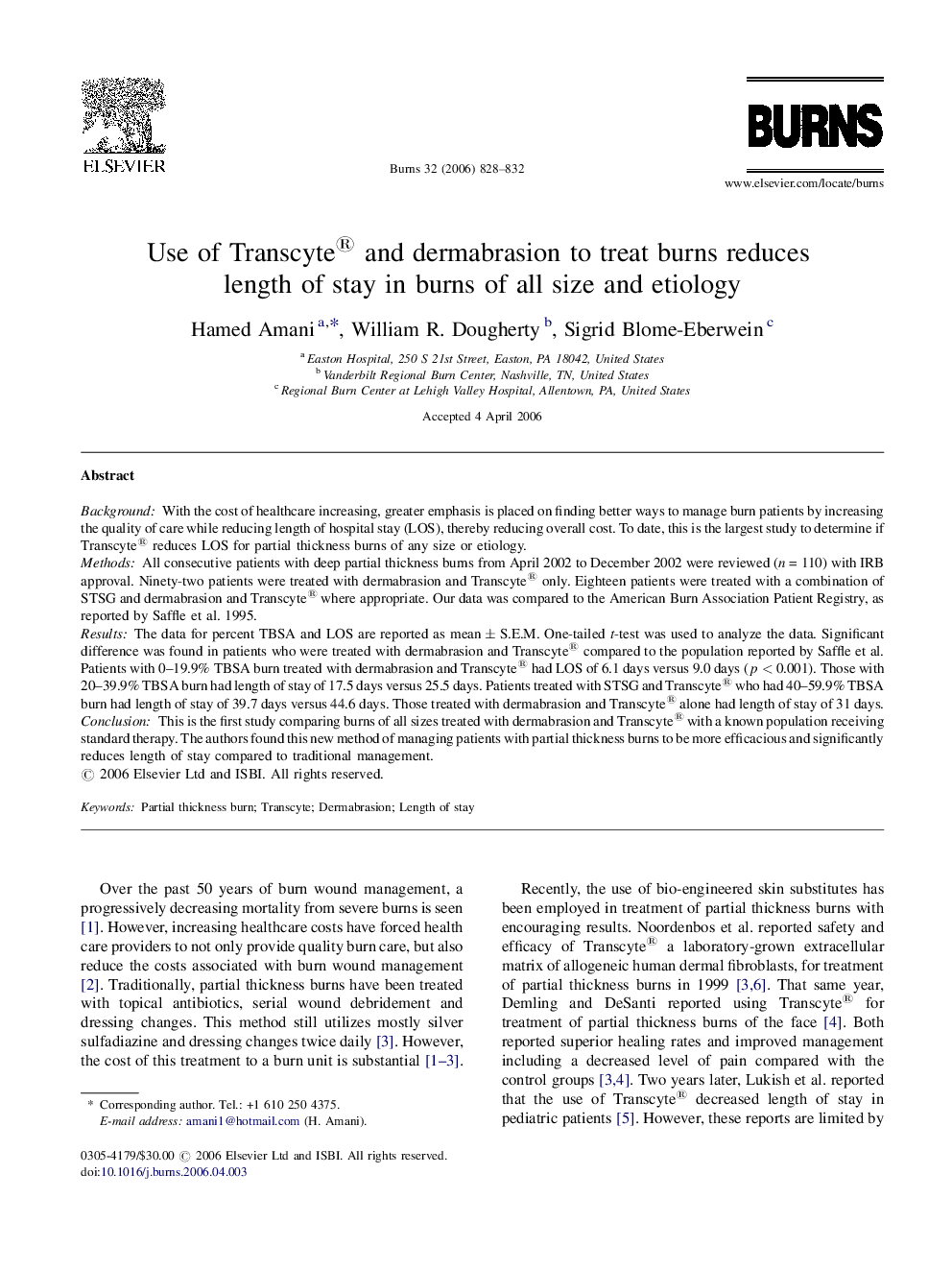| Article ID | Journal | Published Year | Pages | File Type |
|---|---|---|---|---|
| 3106995 | Burns | 2006 | 5 Pages |
BackgroundWith the cost of healthcare increasing, greater emphasis is placed on finding better ways to manage burn patients by increasing the quality of care while reducing length of hospital stay (LOS), thereby reducing overall cost. To date, this is the largest study to determine if Transcyte® reduces LOS for partial thickness burns of any size or etiology.MethodsAll consecutive patients with deep partial thickness burns from April 2002 to December 2002 were reviewed (n = 110) with IRB approval. Ninety-two patients were treated with dermabrasion and Transcyte® only. Eighteen patients were treated with a combination of STSG and dermabrasion and Transcyte® where appropriate. Our data was compared to the American Burn Association Patient Registry, as reported by Saffle et al. 1995.ResultsThe data for percent TBSA and LOS are reported as mean ± S.E.M. One-tailed t-test was used to analyze the data. Significant difference was found in patients who were treated with dermabrasion and Transcyte® compared to the population reported by Saffle et al. Patients with 0–19.9% TBSA burn treated with dermabrasion and Transcyte® had LOS of 6.1 days versus 9.0 days (p < 0.001). Those with 20–39.9% TBSA burn had length of stay of 17.5 days versus 25.5 days. Patients treated with STSG and Transcyte® who had 40–59.9% TBSA burn had length of stay of 39.7 days versus 44.6 days. Those treated with dermabrasion and Transcyte® alone had length of stay of 31 days.ConclusionThis is the first study comparing burns of all sizes treated with dermabrasion and Transcyte® with a known population receiving standard therapy. The authors found this new method of managing patients with partial thickness burns to be more efficacious and significantly reduces length of stay compared to traditional management.
